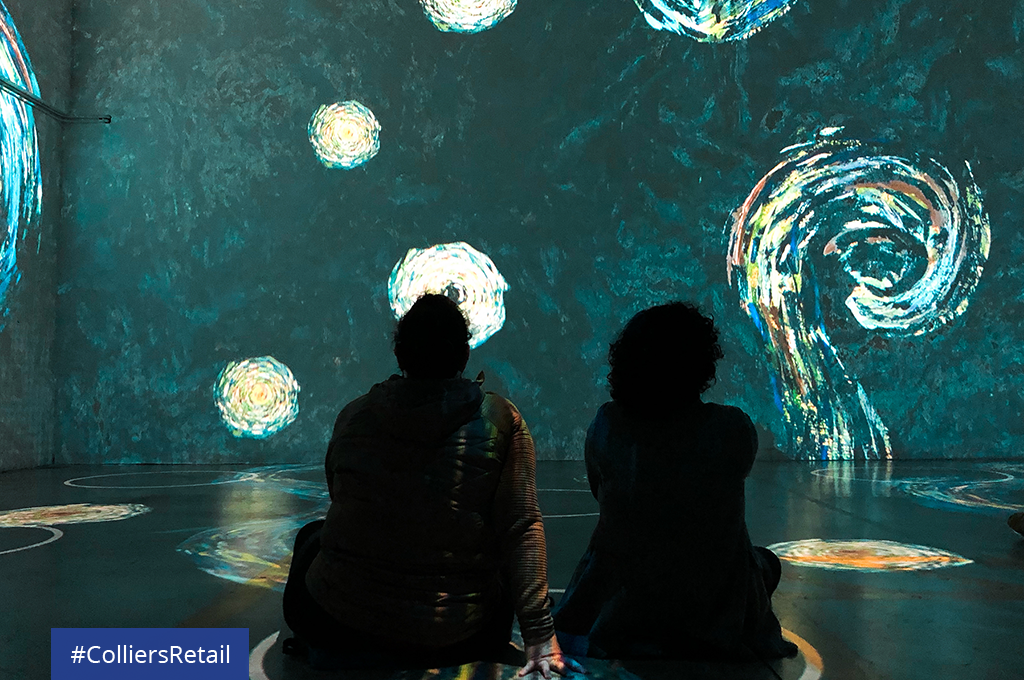Earlier this year, landlords began filling their vacant retail spaces with interactive and immersive pop-up concepts. Probably the most known is the Van Gogh Exhibition, which opened several outlets around the U.S. just as retail re-emerged last summer. At the time, analysts speculated about the viability of these interactive exhibitions and whether or not they would draw consumers back to venues.
Coresight Research recently reported that avoidance of public places is down 26 percentage points compared to last year, an encouraging sign that consumer confidence is on the rise. That’s good news for landlords and tenants alike, especially as immersive exhibitions become a renewed source of revenue for vacant retail.
In the last year, we’ve seen a cluster of immersive pop-up concepts rolling out with success in other countries, making their way into U.S. suburban markets. And over the last few months, we’ve received requests by mixed-use art tenants to secure spaces in more potent site A locations — an ideal client for landlords looking to draw foot traffic to local corridors.
Where Art Meets Retail
The 360 degree Van Gogh Exhibition blends augmented reality with a light and sound show to assimilate the master painter’s creative process. The exhibition’s popularity has spawned several imitators, including Immersive Frida Kahlo, opening at SVN West in San Francisco this month. Culturespaces, renowned for its Atelier des Lumieres exhibits in Paris, banking on immersive experiences in the U.S., invested in restoring a 33,000 square foot location in lower Manhattan. In addition, the Hall des Lumieres will launch an immersive art tribute to Gustav Klimt. The experiential movement continues to evolve and has inspired other tech-centric, projection-based exhibits like teamLab’s Continuity event that introduces audiences to three-dimensional floral and fauna that influence East Asian art.
“We have partnered with the Van Gogh Exhibition on their expansion plan with several new locations in the works, including three in New York state, one in New Orleans, and another in Raleigh, NC. Their retail conversion and design are transformative, adapting the venue to create an incredible experience that educates and entertains,” shares Zach Nathans, Director of Retail Services, Colliers New York.
The Future is Close
The sensory experience of these exhibits could be a beginner’s manual to navigating the metaverse landscape. Imagine marveling at a projection of The Kiss on a wall and then entering an extended reality platform where you are the characters in the art. It’s a bit premature to consider virtual harmony across realities. However, some forward-thinking NFT collectors established The Museum of Crypto Art (MoCA), the Metaverse’s first VR art gallery, so who knows what the future may hold.

 Anjee Solanki
Anjee Solanki

 Aaron Jodka
Aaron Jodka Nicole Larson
Nicole Larson
